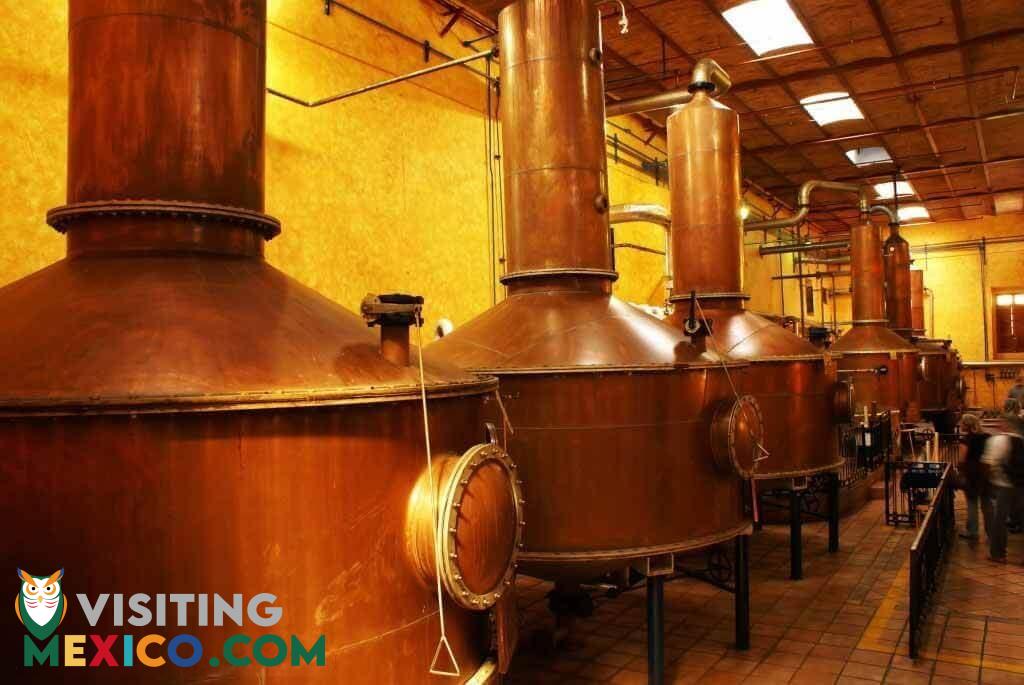Tequila is a alcohol spirit that comes from the Blue Agave plant. It is originally from Mexico where the law states that it can only be produced in certain regions within the country. These areas are mainly in the state of Jalisco as well as some parts of the states of Michoacán, Guanajuato, Tamaulipas, and Nayarit. Production of Tequila outside of these areas is illegal and could result in some serious legal consequences.
The native people of Mexico would use Tequila in religious ceremonies as well as for medicinal purposes. In 1758, Jose Cuervo acquired full cultivation rights for the growth of Agave along with production rights for tequila. This was the first-ever commercial undertaking of tequila production.

Most Tequilas are made at 38% to 40% alcohol content which is about 80 proof. There are however some that are stronger at 55% alcohol content which is about 110 proof. The categories are according to age before bottling. There are five main categories which are Blanco, Joven, Reposado, Anejo, and Extra Anejo.

There are more than one hundred distillers within the areas of Mexico with production rights. These distilleries produce about nine hundred different brands altogether. Through trade agreements, the Mexican government has ensured that tequila remains a purely Mexican affair. Any drinks made outside the specified regions of Mexico cannot use the name tequila. Even with the exact same ingredients and processes, the drink cannot be “tequila”. With international consumption currently estimated at around thirty million cases, the Mexicans have good reason to protect this business. When you consider that each case is nine liters which translates to more than two hundred and seventy million liters of tequila you understand the reason for the overzealous protection of their national drink.

Even though the production remains within Jalisco and those listed, there are a lot of multinational companies in the business. Along with the family-owned distilleries, these businesses employ thousands of people on their production lines as well as indirectly. Agave farms and distribution companies contribute more employment opportunities than a lot of other economic activities in Mexico. This is one of the main reasons why the government of Mexico prefers to retain production within its borders. There is also significant tax revenue by the companies that produce tequila.
If you plan to visit the city of Tequila, in Jalisco check out our Jalisco page by clicking here.

A form to capture the Coahuila interest in Trip Planning from the website.
A form to capture the Tamaulipas interest in Trip Planning from the website.
A form to capture the San Miguel de Allende interest in Trip Planning from the website.
A form to capture the Sinaloa interest in Trip Planning from the website.
A form to capture the Morelia interest in Trip Planning from the website.
A form to capture the Riviera Nayarit interest in Trip Planning from the website.
A form to capture the San Cristobal de las Casas interest in Trip Planning from the website.
A form to capture the Palenque interest in Trip Planning from the website.
A form to capture the Monterrey interest in Trip Planning from the website.
A form to capture the Nuevo Leon interest in Trip Planning from the website.
A form to capture the Hermosillo interest in Trip Planning from the website.
A form to capture the San Carlos interest in Trip Planning from the website.
A form to capture the Puerto Peñasco interest in Trip Planning from the website.
A form to capture the Sonora interest in Trip Planning from the website.
A form to capture the Mexico City interest in Trip Planning from the website.
A form to capture the Ciudad Juarez interest in Trip Planning from the website.
A form to capture the Chihuahua interest in Trip Planning from the website.
A form to capture the Los Cabos interest in Trip Planning from the website.
A form to capture the Todos Santos interest in Trip Planning from the website.
A form to capture the Loreto interest in Trip Planning from the website.
A form to capture the Baja Sur interest in Trip Planning from the website.
A form to capture the Tijuana interest in Trip Planning from the website.
A form to capture the Mexicali interest in Trip Planning from the website.
A form to capture the Tecate interest in Trip Planning from the website.
A form to capture the Puerto Nuevo interest in Trip Planning from the website.
A form to capture the Valle de Guadalupe interest in Trip Planning from the website.
A form to capture the Ensenada interest in Trip Planning from the website.
A form to capture the Rosarito interest in Trip Planning from the website.
A form to capture the San Felipe interest in Trip Planning from the website.
A form to capture the Baja California interest in Trip Planning from the website.
Form signup from a conference to retrieve business details of people in Mexico who have business that would like to be affiliated with our website for marketing and advertising purposes.
"*" indicates required fields